EC-Lab 軟體更新 V11.50
親愛的客戶、廠商您好:
近期 BioLogic EC-Lab 推出了最新版本更新,以下為本次更新內容,請查閱
若有任何問題歡迎聯絡我們,謝謝!
1. I-range automatic in Galvano mode for Premium instruments
- Market:
Battery research/testing, or any other Energy Storge device. Also, for general research in electrochemistry, using chronoamperometric techniques, especially for electrolysis or sensor applications. - End user benefits:
Easier setup and adapt the hardware settings to the capacity of the device. It allows the user to get the best from her/his instrument automatically.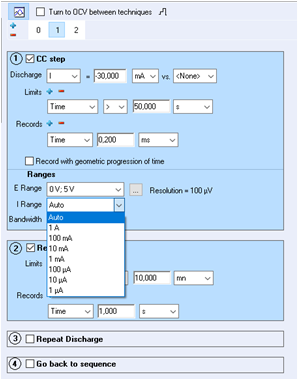
- Where is it?
It is available in all the Galvano technique, but in the battery dedicated technique where a combination of Galvano and Potentio control is required such as the GPCL CCCV and MB. - NOTE:
This feature will not be available if the channel board is connected to the Ultra Low Current option, only. But if the channel board is connected to a booster, it will be available whatever is the cell cable, standard or ULC
2. DEV in Z Fit has been changed to STD Error
- Market:
All applications - End user benefits:
The new indicator, Error, is based on Monte-Carlo algorithm. More info learning Center/manual. In short, this Error gives a confidence interval of the fitted value of the element of the Equivalent Circuit. The algorithm has been changed because the previous algorithm was leading to non-meaningful value. - Where is it?
It is available in the ZFit results, in the column Err.
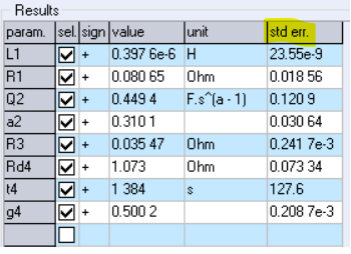
3. dE/dt improvement
- Market:
Battery and Corrosion application - End user benefits:
The limit check is more robust. The delay is adapted to the voltage variation, for a fast variation the delay could be as fast as 40ms.
The algorithm has been changed to be more robust for fast AND slow voltage variation. The previous algorithm leads to false positive for slow voltage variation.
Note this limit is managed by the embedded firmware, so it doesn’t depend on the sampling rate. - Where is it?
In all techniques where dE/dt limit is available, OCV, GCPL, CCCV, MB…
4. -dE in MB technique
- Market:
Battery application, especially for NiMH and solid-state battery. - End user benefits:
This limit was only available for BT-Lab software. It is now implemented in EC-Lab software. The new limit is determined by a maximum voltage, and after the voltage decrease, it trigger the limit and shift to the next step. The delay could be as fast as 2 ms.
Note this limit is managed by the embedded firmware, so it doesn’t depend on the sampling rate. - Where is it?
Only available in the MB technique
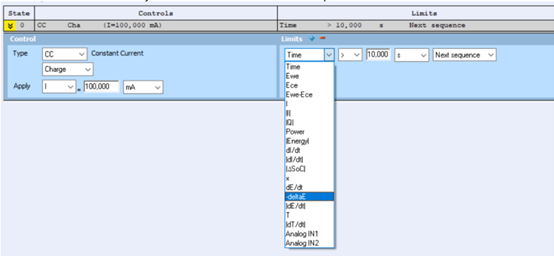
5. Limit in Charge of a previous steps
- Market:
Battery application - End user benefits:
This new limit allows the user to define a charge limit, “IQI”, in function of the global limit of the previous step.
QPrev is the global limit of the previous step

With Q seq, you can use the charge of a specific step

- Where is it?
Only available in the MB technique…

6. Performance improvements
- Market:
Battery application, when a high amount of data has to be plotted or processed. - End user benefits:
It makes the User-experience smoother.
7. Binder compatible
- Market:
Battery application - End user benefits:
Especially in Europe where binder is very strong - Where is it?
Actually, this feature is embedded in TCU Server. So the TCU Server has to be updated to the TCU Server 1.3.0.
A specifi communication protocol has been developed, it is the “MODBUS RTU OVER TCP”. It is compatible only with Ethernet communication.
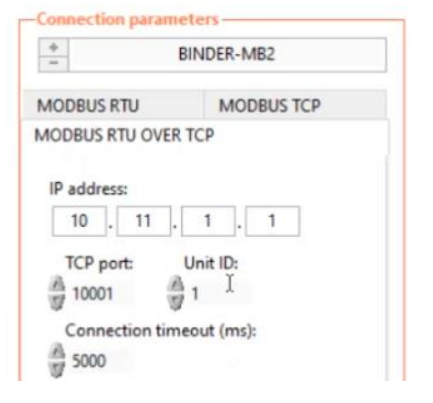
- NOTE:
The Ethernet cable has to be plugged onto the climatic chamber before switching on the climatic chamber.
8. EIS QI in Stack mode
- Market:
Battery application - End user benefits:
The EIS QI is now available for the full stack but also for each element of the stack.
9. Technique adapted to the control mode
- Market:
Battery research/testing - End user benefits:
In the V11.40, the full control cell has been implemented for all our instruments. The mask if some technique may lead to confusion, because “Ewe” label was nor updated to “Ecell”.
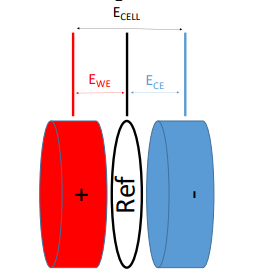
- Where is it?
In every technique, for example, the CV technique
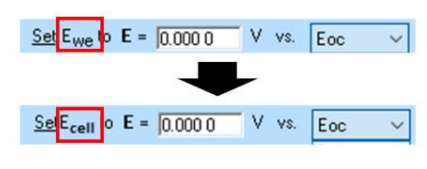
10. Bug fixing & minor enhancements
- bug fixing of EXT APP technique
- CCCV technique doesn’t show up for MPG2xx series
- Sometimes conditional limits in PEIS/GEIS don’t show up
- Access violation message from Windows show up
- Material variables were not displayed if Ece was ticked
- Charge time was not displayed correctly when “charge time + discharge time vs cycle” were plotted
- ZIR correction hard has been improved
- Export text bug fixing
- Variable of pulsed techniques were not exportable
- PEISW default setting has been changed (Zlim enabled by default)
- BCD. Variable N2 were truncated, and duration was changed to 0 when the user didn’t click on the key before changing the sequence
- MB data were not properly managed by Zfit, (“CurCycle” message show up)
- Compensation post-process tool: units have been added Ohm, mOhm, F and μF
- SP-50e/SP-150e have been added in the virtual instruments
- SPEIS techniques. Was not possible to set value higher than 50mV as Va.
- CPP/PDYN: limit in current were not managed
- Stack mode:
- Improved clock management to avoid issue at high frequencies
- Charge (Q-Q0) is now available in the stack mode
- EULA has been updated “commercial” has been removed
- Other minor bugs…




